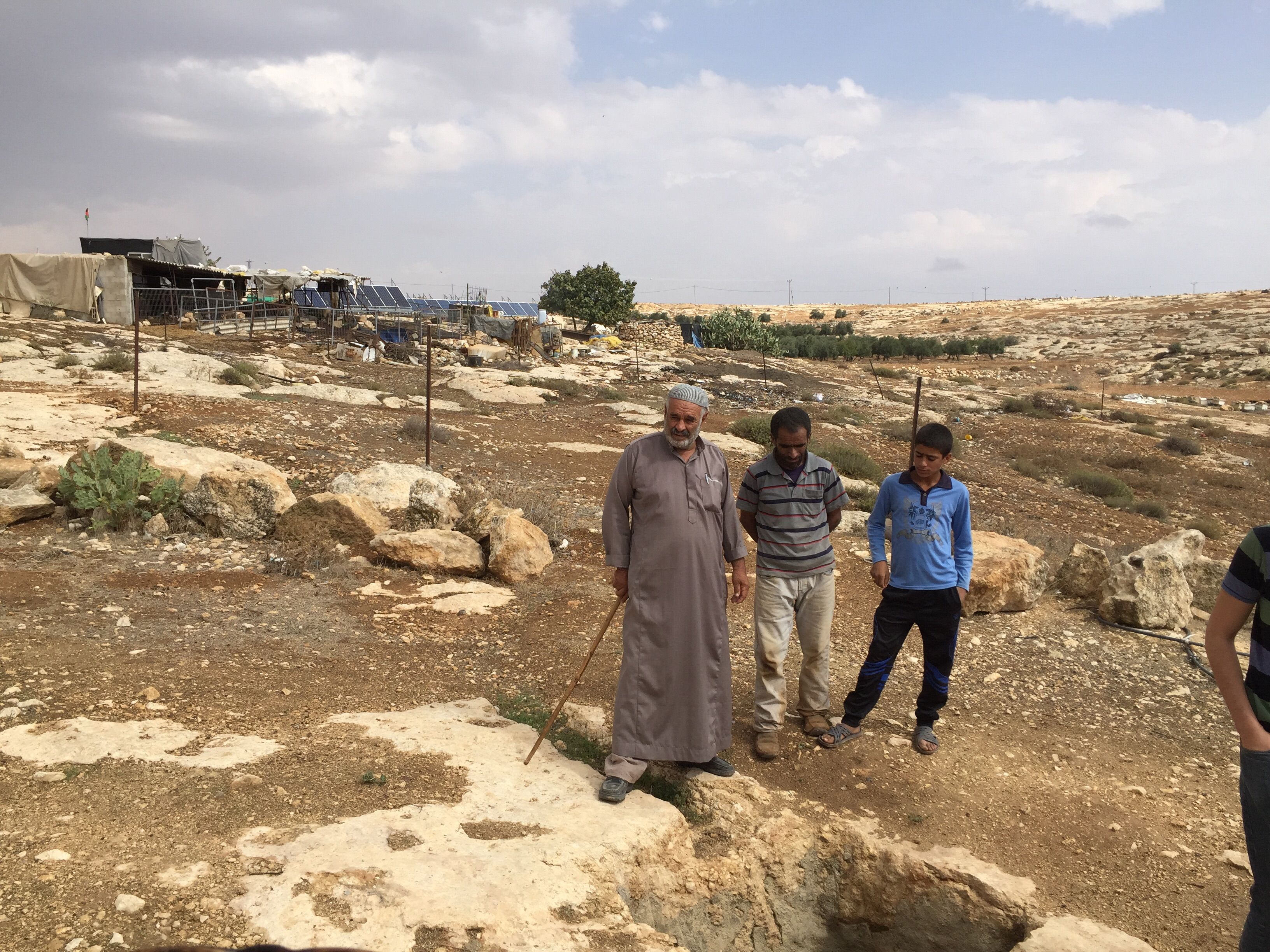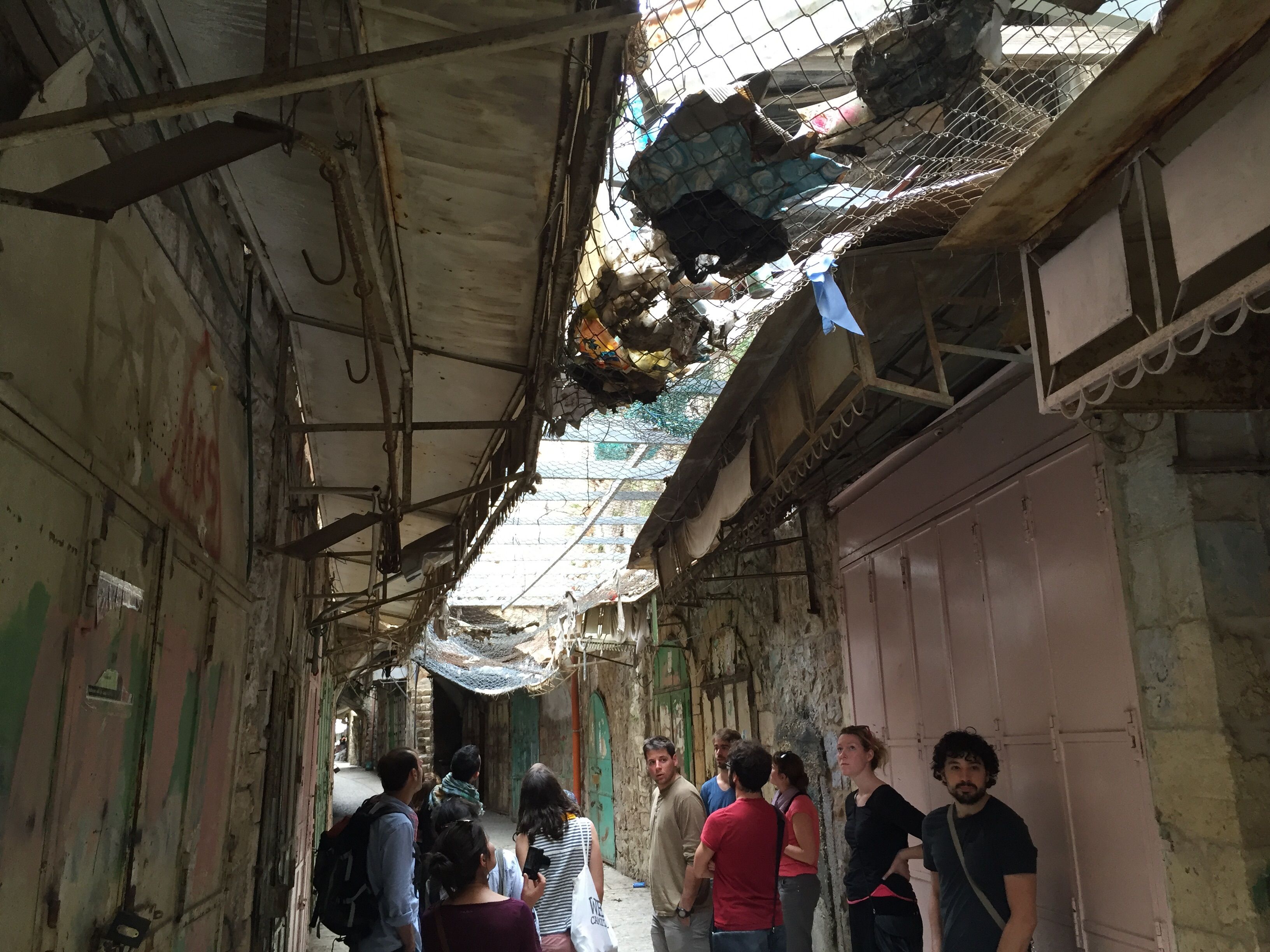SUSIYA, West Bank — Muhammad Ahmed Nawajah's family lives in a collection of tents and cinderblock structures on an extremely rocky hillside across which clucking chickens dash. His hamlet, part of the village of Susiya, is incongruously powered by an array of solar cells, provided by a European organization, but other than that, it doesn't seem much improved from a half century ago.
Actually, it's probably worse than it was in 1965. Back then, the cistern collected water, and there was a cool, inhabitable cave. Now the cistern has been ruined and the cave is caved in, for which Mr. Nawajah blames Israel.
Today, however, more than half of the West Bank, including Susiya, is still in what's called Area C. There Israel rules, Jewish "settlers" build smart suburbs, and Palestinians like Mr. Nawajah are generally prevented by a permitting process from doing much of anything. Decades back, their villages were occasionally bulldozed.
"I live in this tent, I and my son, 30 years," he said today. "It is mine, it is my land. I love my land. I do not love the settlers and Israel. They do not allow us to build house like them."
Because Jewish settlers and Palestinian farmers don't always get along, the Israel Defense Forces have established a "buffer zone" between them. That zone includes land the Palestinians would otherwise be farming, according to Nadav Bigelman, a Jerusalem resident and former Israeli soldier. He is now part of the group Breaking the Silence, which educated people about the West Bank. He said his country may have stopped destroying Palestinian villages, but it has traded that for a policy of "making life miserable."
Ghost street of Hebron
A few miles away is the sprawling Palestinian city of Hebron. Israeli media reports near-daily knife attacks against Israel's soldiers there, which usually end with the Palestinian attacker dead. Palestinians regularly claim the knives were planted at the scenes.
Hebron is more than 99 percent Palestinian, but in the Old City, next to the revered Sanctuary of Abraham, is a small Jewish settlement. In the Old City, Palestinians have massacred Jews and Jews have massacred Palestinians, and as a result the Ottoman-era warren is bizarrely apportioned.
The sanctuary is split into a mosque and a synagogue, with separate entrances guarded by scores of Israeli soldiers. The nearly-customerless Palestinian market, which sits below some of the settler homes, is protected from hurled objects by overhead netting and fencing. Emek Hebron Street, which flanks the settlement, is a buffer zone guarded by Israeli soldiers and apparently a no-go for Palestinians, other than a few kids playing soccer at one end. Westerners have to show their passports to walk the street. The only other person on the street was a jogger wearing a skull cap.
Hebron's resentments have been aboil lately, and it's devastating to business. "Welcome in Old City," a Palestinian merchant growled. "Here no people. No tourist."
Today did see the arrival of around a dozen French travelers on a tour sponsored by the Catholic Committee Against Hunger and for Development. As they climbed an Old City hill, a few popping noises could be heard from some nearby street. Minutes later, the travelers clasped tissues over their faces to filter the smell of tear gas.
For the long haul?
Getting from Hebron to Jerusalem starts with a Palestinian taxi, which can only go as far as Bethlehem. From there, you hop a bus. It rolls past walls and fences and stops at a checkpoint, where all of the Palestinians must get off, show their identifications, and open their bags. Only then does the bus roll into the Holy City.
Mr. Rabin decided late in his life that "the territory Israel occupied since 1967 was no longer a source of security for Israel -- just the opposite, it was a source of insecurity," wrote former U.S. peace negotiator Dennis Ross in his new book Doomed to Succeed. That sentiment, though, isn't the conventional wisdom in Israeli politics today.
Mr. Bigelman, 27, wonders where it's all heading. He said it's possible that Israeli policies are aimed at improving the country's bargaining position in advance of some future negotiation that would lead to a Palestinian state. The other possibility, he said, is that "we're planning a prolonged, sustainable -- in a way -- occupation."
Breaking the Silence, he said, has been educating thousands of Israelis a year, plus international visitors, about the situation in the West Bank. In recent years, he said, there's also a growing awareness that the checkpoints, guard towers, soldiers and infrastructure provided to settlements cost a lot.
"Life is very expensive in Israel," he said. "A huge amount of money from Israel goes here" to the West Bank.
Meanwhile the walls, checkpoints and transportation challenges have succeeded in separating most Palestinians from most Israelis, to the extent that people in Tel Aviv and Haifa don't think too much about Hebron, said Mr. Bigelman.
"Most Israelis," he said, "don't care about Susiya."







